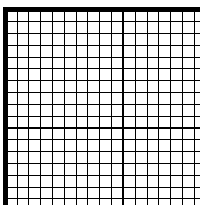Today, we would like to discuss the concept of centimeter cubes and their applications in mathematics. Centimeter cubes are a crucial tool in teaching students about measurement and spatial awareness. They are small plastic cubes, each side of which measures 1 centimeter. In this post, we will explore various aspects of centimeter cubes, including their uses, templates, and printable resources.
Centimeter Cube Templates
 When teaching students about centimeter cubes, having access to templates can be incredibly helpful. Emerald Morehouse, an experienced educator, has created a fantastic centimeter cube template that can be found on Teachers Pay Teachers. This template allows teachers to print out centimeter cubes that can be cut, assembled, and used in various engaging activities. The cubes are color-coded to aid in visualization and understanding of spatial relationships.
When teaching students about centimeter cubes, having access to templates can be incredibly helpful. Emerald Morehouse, an experienced educator, has created a fantastic centimeter cube template that can be found on Teachers Pay Teachers. This template allows teachers to print out centimeter cubes that can be cut, assembled, and used in various engaging activities. The cubes are color-coded to aid in visualization and understanding of spatial relationships.
Pattern Trains for First Graders
 One exciting way to introduce patterns to first graders is by using pattern trains. By utilizing centimeter cubes, students can create trains with repeating patterns of different colors. This activity engages students in hands-on learning and allows them to develop their pattern recognition skills. Additionally, it promotes critical thinking and logical reasoning.
One exciting way to introduce patterns to first graders is by using pattern trains. By utilizing centimeter cubes, students can create trains with repeating patterns of different colors. This activity engages students in hands-on learning and allows them to develop their pattern recognition skills. Additionally, it promotes critical thinking and logical reasoning.
Measuring Volume with Centimeter Cubes
 Measuring volume is another essential concept in mathematics. Introducing students to this concept can be made interactive and fun with centimeter cubes. An excellent way to start is by providing students with various objects and asking them to estimate the volume using centimeter cubes. This activity promotes estimation skills and helps students develop a deeper understanding of volume as they manipulate the cubes to measure.
Measuring volume is another essential concept in mathematics. Introducing students to this concept can be made interactive and fun with centimeter cubes. An excellent way to start is by providing students with various objects and asking them to estimate the volume using centimeter cubes. This activity promotes estimation skills and helps students develop a deeper understanding of volume as they manipulate the cubes to measure.
Creating 3D Shapes
 Centimeter cubes serve as building blocks for creating and visualizing three-dimensional shapes. By connecting the cubes, students can assemble prisms, rectangular solids, or even more complex shapes. This hands-on approach helps students grasp the concept of volume and relationships between different shapes. It also encourages creativity and exploration as students discover how the number of cubes affects the overall volume.
Centimeter cubes serve as building blocks for creating and visualizing three-dimensional shapes. By connecting the cubes, students can assemble prisms, rectangular solids, or even more complex shapes. This hands-on approach helps students grasp the concept of volume and relationships between different shapes. It also encourages creativity and exploration as students discover how the number of cubes affects the overall volume.
In conclusion, centimeter cubes are an invaluable tool in mathematics education. They engage students in hands-on learning, promote critical thinking, and develop spatial awareness. By making use of centimeter cube templates, pattern trains, and interactive volume measurement activities, educators can provide students with a solid foundation in mathematics. So let’s embrace the power of centimeter cubes in the classroom and inspire a love for mathematics in our students!